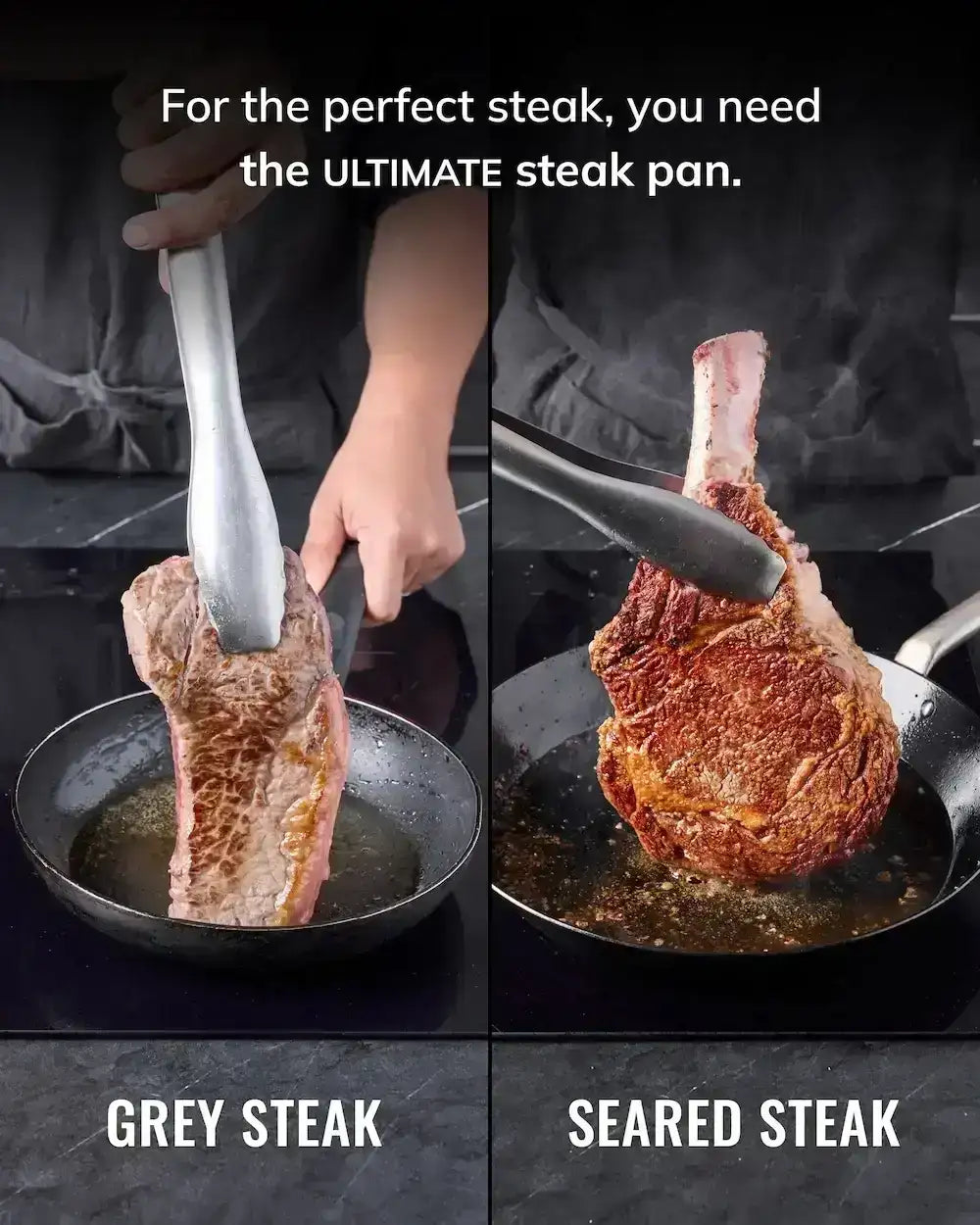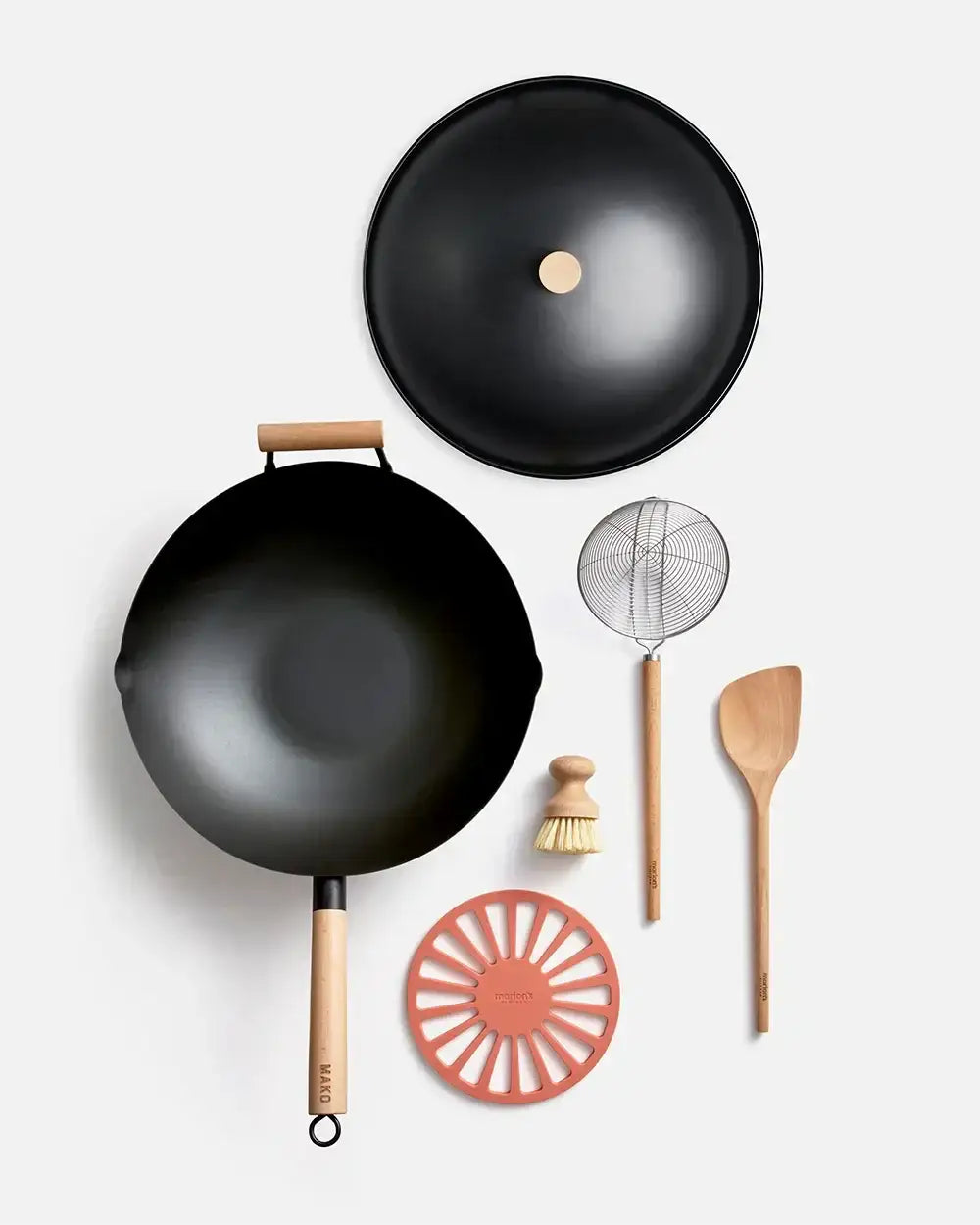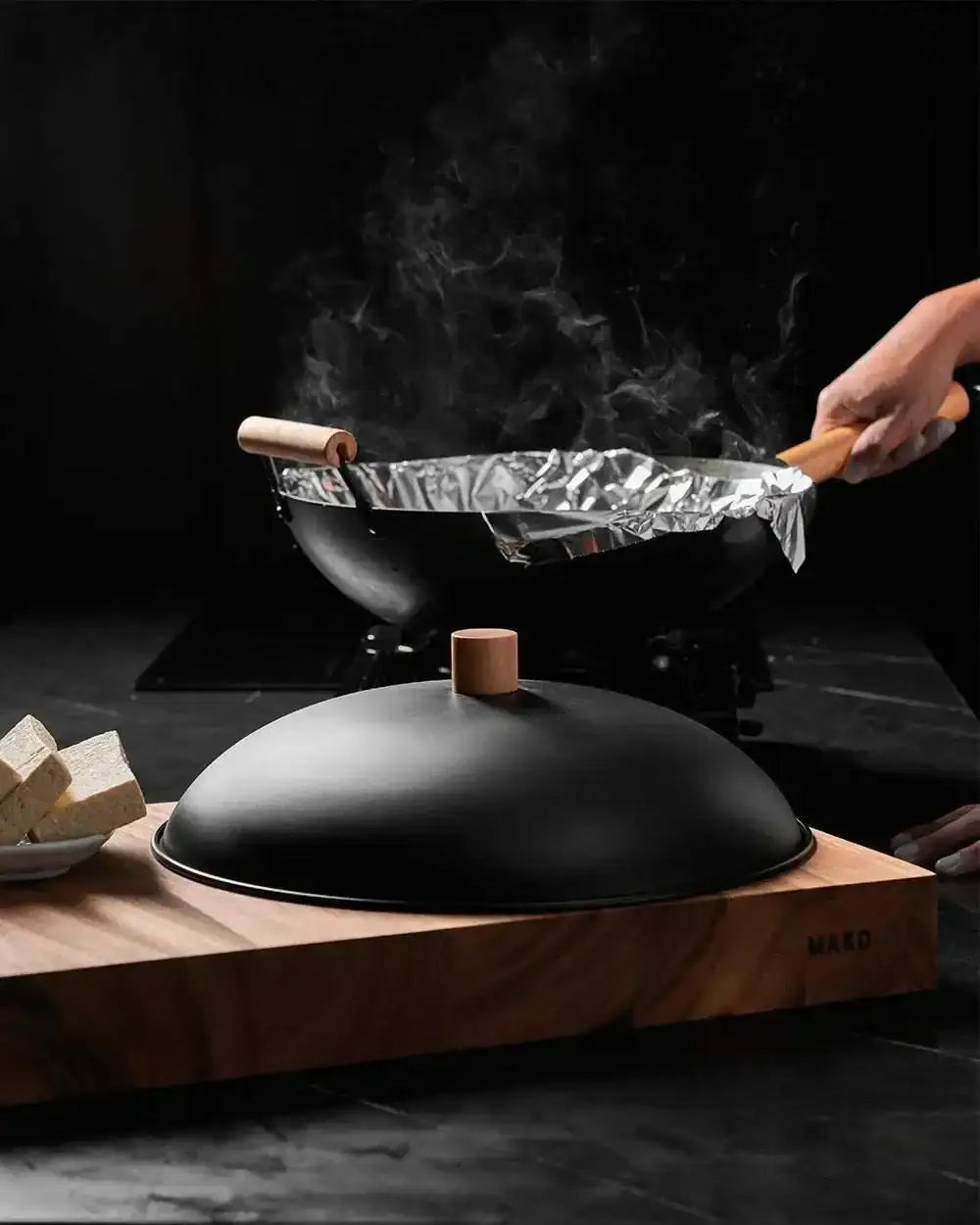
How to season black carbon steel
There’s not much better than getting your hands on carbon steel cooking gear; it comes with major approval from chefs and top cooks everywhere. Carbon steel pans can truly help you up your cooking game, and you’ll be thrilled to bring perfectly seared, buttery steaks, crispy-skinned chicken, sweet, caramelised onions and sizzled mushrooms to the table.

Remind me; why does carbon steel need seasoning?
Normally, you need to carefully season a new carbon steel pan, laying down polymerised layers of oil on the surface over high heat, then building up more and more layers over time to protect your pan from rust. A well-seasoned surface gives the fabulous, naturally non-stick properties that makes carbon steel so desirable.
When you choose black carbon steel, such as our MAKO Black Steel, that initial seasoning process has already been done. These pans have been heat treated with oils to create a surface that’s ready to use, straight out of the box. A pre-seasoned pan does away with the need for an initial, intensive seasoning, and the natural, non-stick surface will keep building up with use.
Does black carbon steel not need seasoning, ever?
Not exactly… it still needs on-going seasoning. You still need to look after it (wash it gently and dry it well between uses, using oil to season it before packing it away) to maintain and build the surface seasoning over time.
TLC for a lifetime of use
Here’s how to season your pan after each use
1
Let your pan cool down before cleaning with warm water, your brush and minimal detergent.

2
Once your pan is clean, rinse it and dry with a tea towel or paper towel.
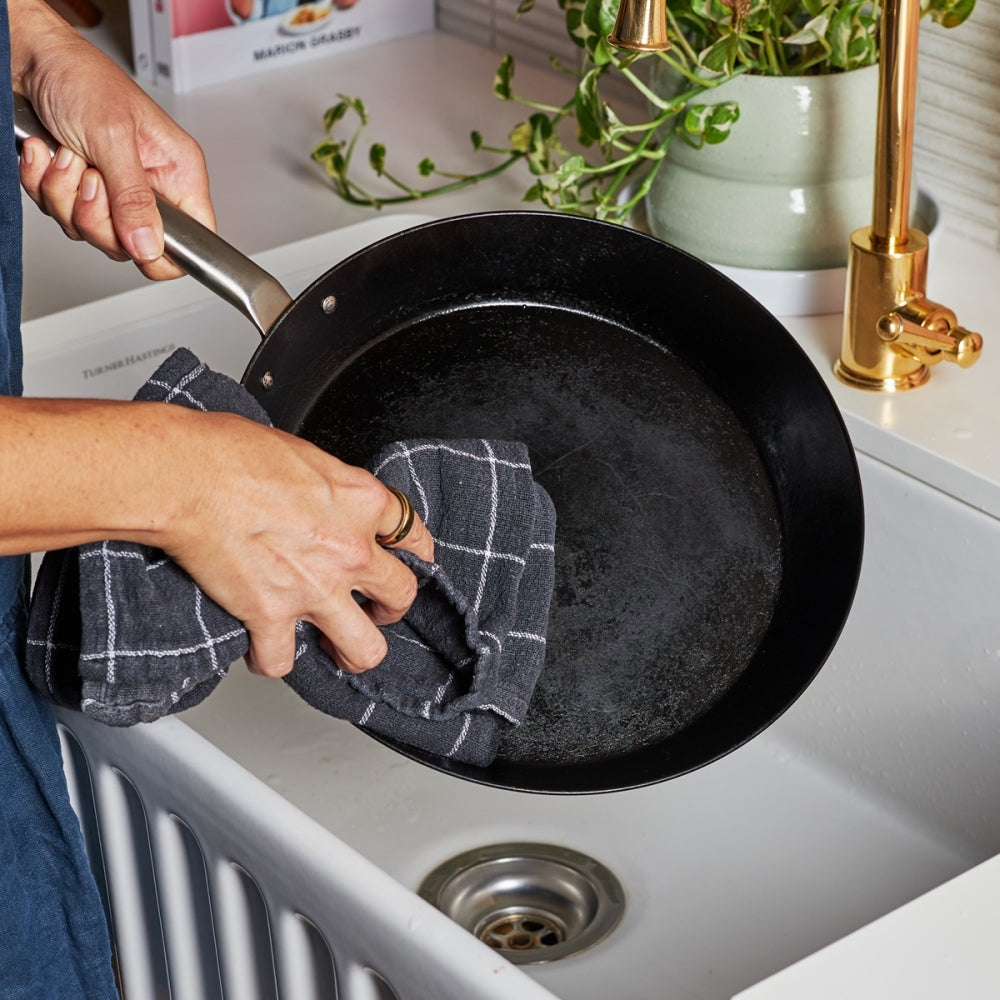
3
Heat your pan on your cooktop on a medium heat until you see light smoke appear.

4
Add two tablespoons of vegetable oil to your hot pan.

5
Use paper towel to (carefully) wipe the oil over the interior surface before taking your pan off the heat.

6
Store your pan in a dry place, careful not to stack other pans on top of it.

How to care for carbon steel pans
- Never use a dishwasher.
- Wash a cold pan in warm water to prevent thermal shock and warping (never put cold water in a hot pan).
- Use a sponge, brush, soft scourer or Sponge Daddy to remove any stuck-on bits; don’t scrub with anything harsh or you’ll damage the patina.
- Dry pans immediately after washing by heating until no moisture remains.
- Avoid stacking other pans on top of carbon steel when you store, unless using a pot protector or layers of kitchen paper for protection.

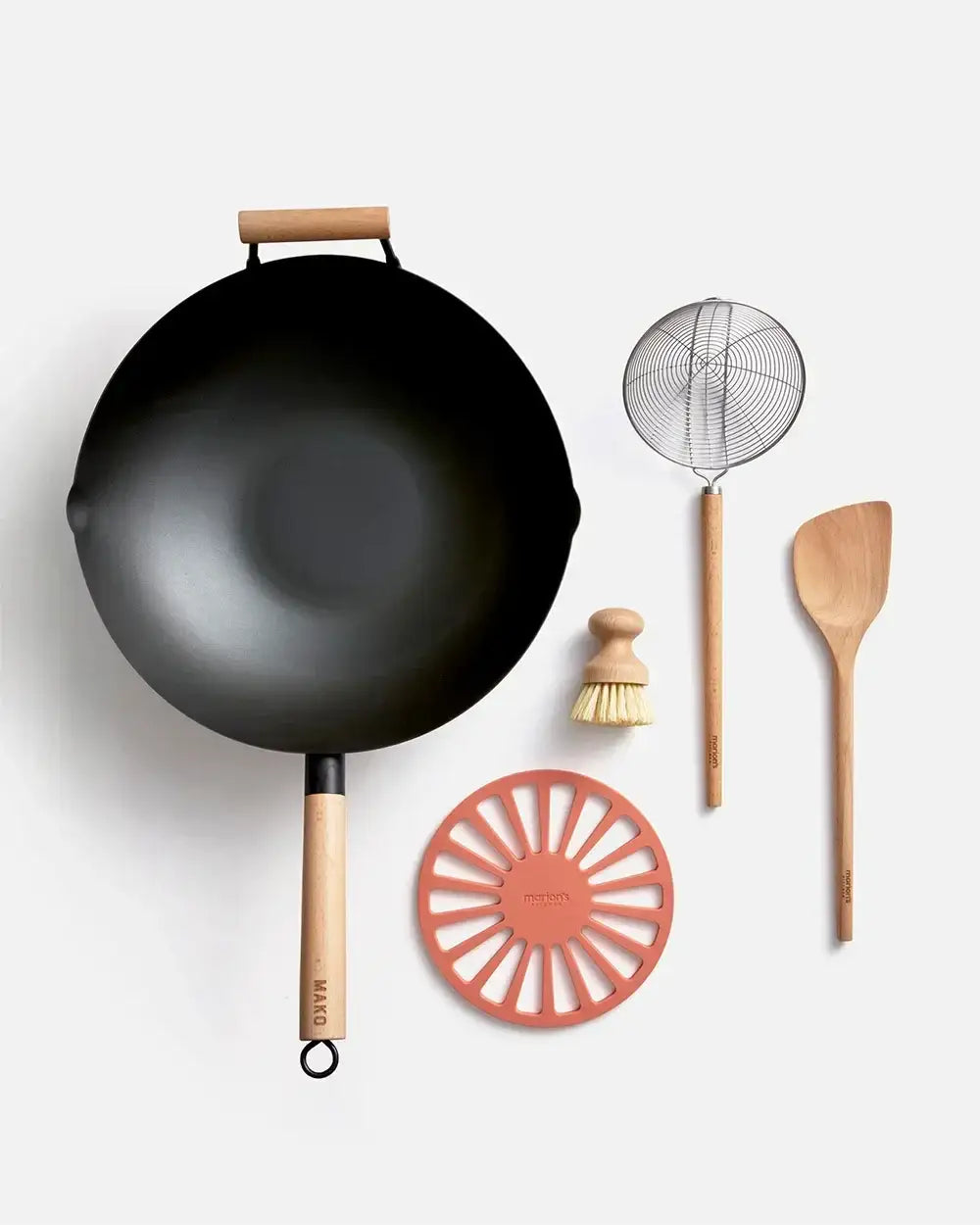
Hot Wok Offer 🔥
MORE READING

Pistachio Crusted Lamb

Mongolian Beef Udon Noodles





